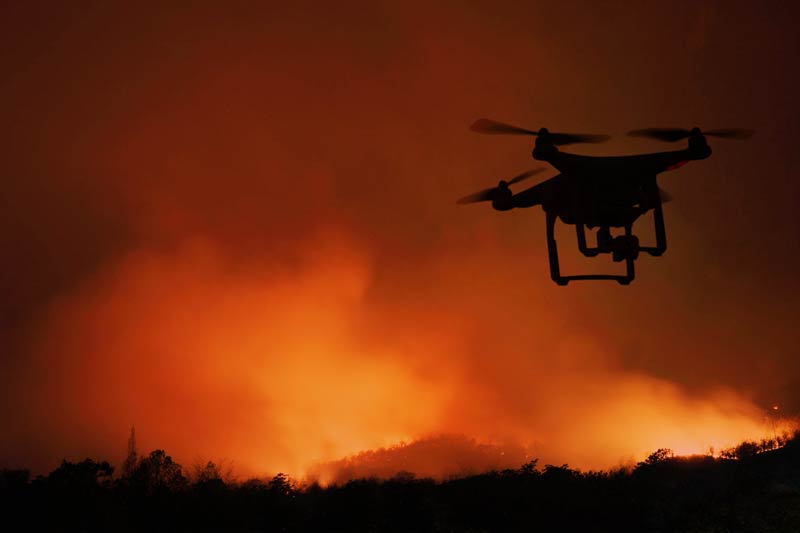
News
New Research Shows Benefits and Drawbacks of Drones in Fire Fighting
New Research Shows Benefits and Drawbacks of Drones in Fire Fighting
As a result of the ongoing rapid technological progress, several innovative technologies have been suggested to better support the emergency response operations of firefighters. Conventional firefighting methods need to be make use of state-of-the-art technical support to combat fires better. History is replete with examples of natural fires that have unleashed havoc on flora and fauna and human population alike.
The Thomas Fire for instance, was a very large wildfire affecting Ventura and Santa Barbara counties. It burned approximately 281,893 acres (440 sq mi; 114,078 ha), becoming the largest wildfire in modern California history, and was fully contained on January 12, 2018. The Thomas Fire was the seventh-most destructive wildfire in state history, destroying at least 1,063 structures, while damaging 280 others. At its height, the Thomas Fire saw over 8,500 firefighters mobilized to fight it, which was the largest mobilization of firefighters for combating any wildfire in California history. At its height, the wildfire was powerful enough to generate its own weather, qualifying it as a firestorm. With the natural vegetation burnt, flash floods and mudflows damaged homes in Montecito when the rains arrived. Evacuations were ordered or anticipated for neighborhoods that sit below areas recently burned by this and other wildfires.
Drones in Firefighting
Drones have been utilised in recent times for identification of hotspots using thermal imaging technology. But what is their real potential in assisting the fire departments in their efforts?
A study has recently been carried out to compare drones or indoor navigation approaches vis-a-vis emergency response information systems (ERIS), in order to ascertain which of the two have more significant potential to change traditional emergency response processes such as the Thomas Fire.
Despite UAVs being perceived as a means to gather information faster, it appears that at this point in time, the practical potential of ERIS is seen as having more useful qualities for fire fighting than that of UAVs. ERIS were found to deliver an informational advantage, although the added complexity of ERIS systems during the decision-making process and the risk of introducing an information overload means drones . The resistance to change might be higher for ERIS than for drones, which primarily support the gathering of data while ERIS has a direct influence on critical decision making. Accordingly, reliability and timing constraints were uttered more prominently for ERIS than for UAVs. The results of the study revealed that ERIS was both more widespread in use and perceived to have a greater potential to expedite the emergency response process than UAVs.
Benefits
Despite this, there were identified several outstanding benefits regarding the use of drones in firefighting.
- Informational advantage – they can provide information not available from other sources (ie above the fire)
- Time advantage – drones outweigh other methods of seeing critical angles of a fire and can be deployed quickly and efficiently
- Currentness of data – situational data is realtime, as opposed to other sources such as Google Maps, and can be acted on accordingly
- Safety – pilots are able to operate the UAVs from a safe location
Drawbacks
Drones were however perceived in the research as rather expensive, requiring investment in trained personnel, and being limited in their range of application. Simplicity, robustness and the ability to stay in the sir for significant amounts of time are also considered as essential characteristics that need to be fulfilled by UAVs in order for them to be regarded a real assistance to extreme fire events. There are also issues of airspace regulations and privacy that need to be addressed in certain areas for their use to be a possibility.
The results of the study, released at the 51st Hawaii International Conference on System Sciences, furthermore indicate that both the most frequently stated positive factor of both ERIS and UAVs was an informational advantage. A thorough evaluation by the users appears to be important to ensure that the technology will indeed support the firefighters during their work in the aspired way. To provide further insights into this particular field of application, future studies ought to verify these results in other regions and contexts.


















